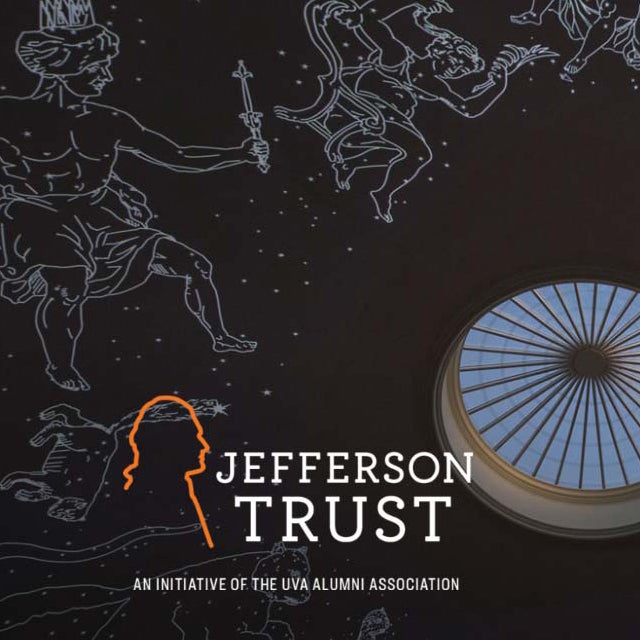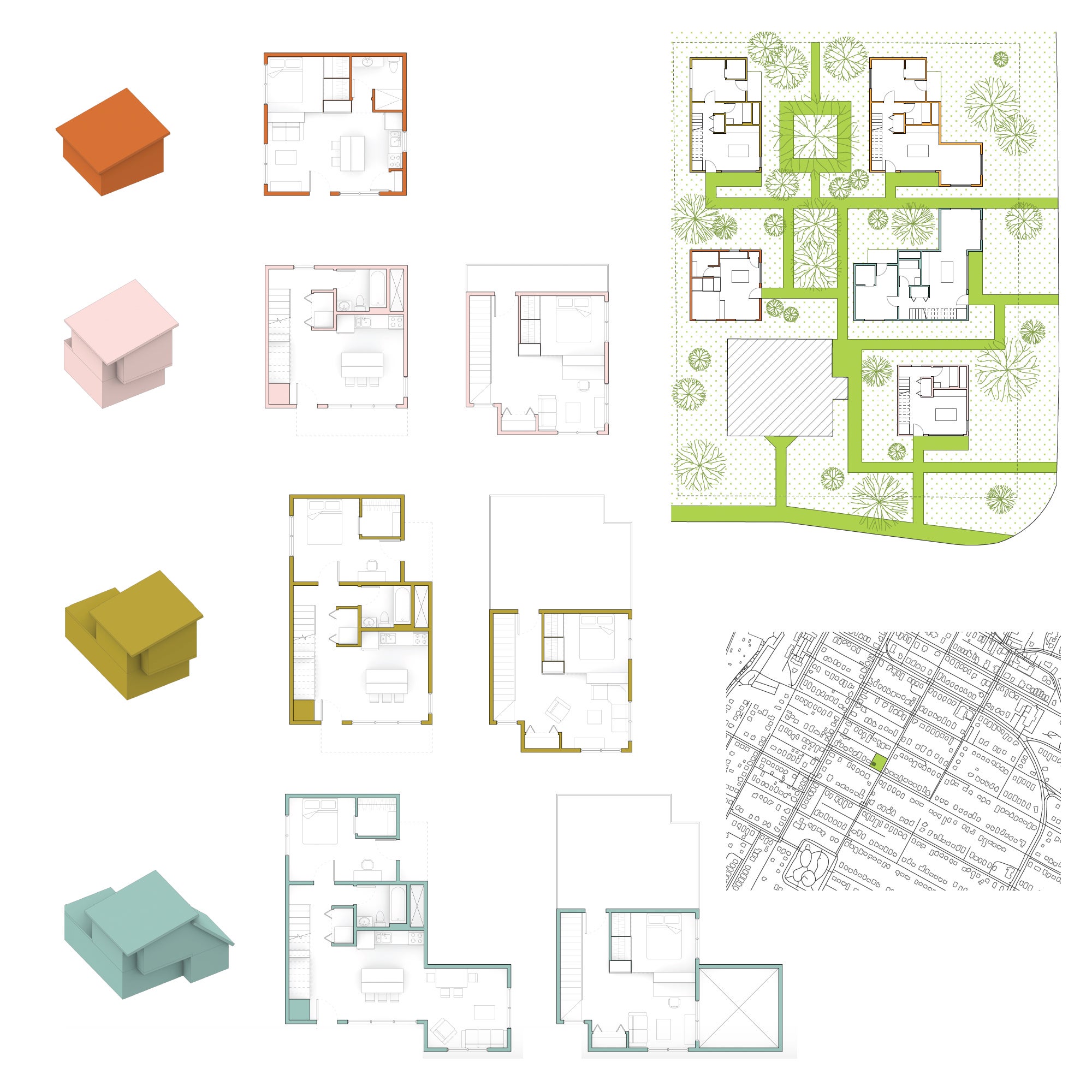
THE A-SCHOOL’S LINCOLN LEWIS AND ANDY PACKWOOD WIN THE 2023 HALS CHALLENGE
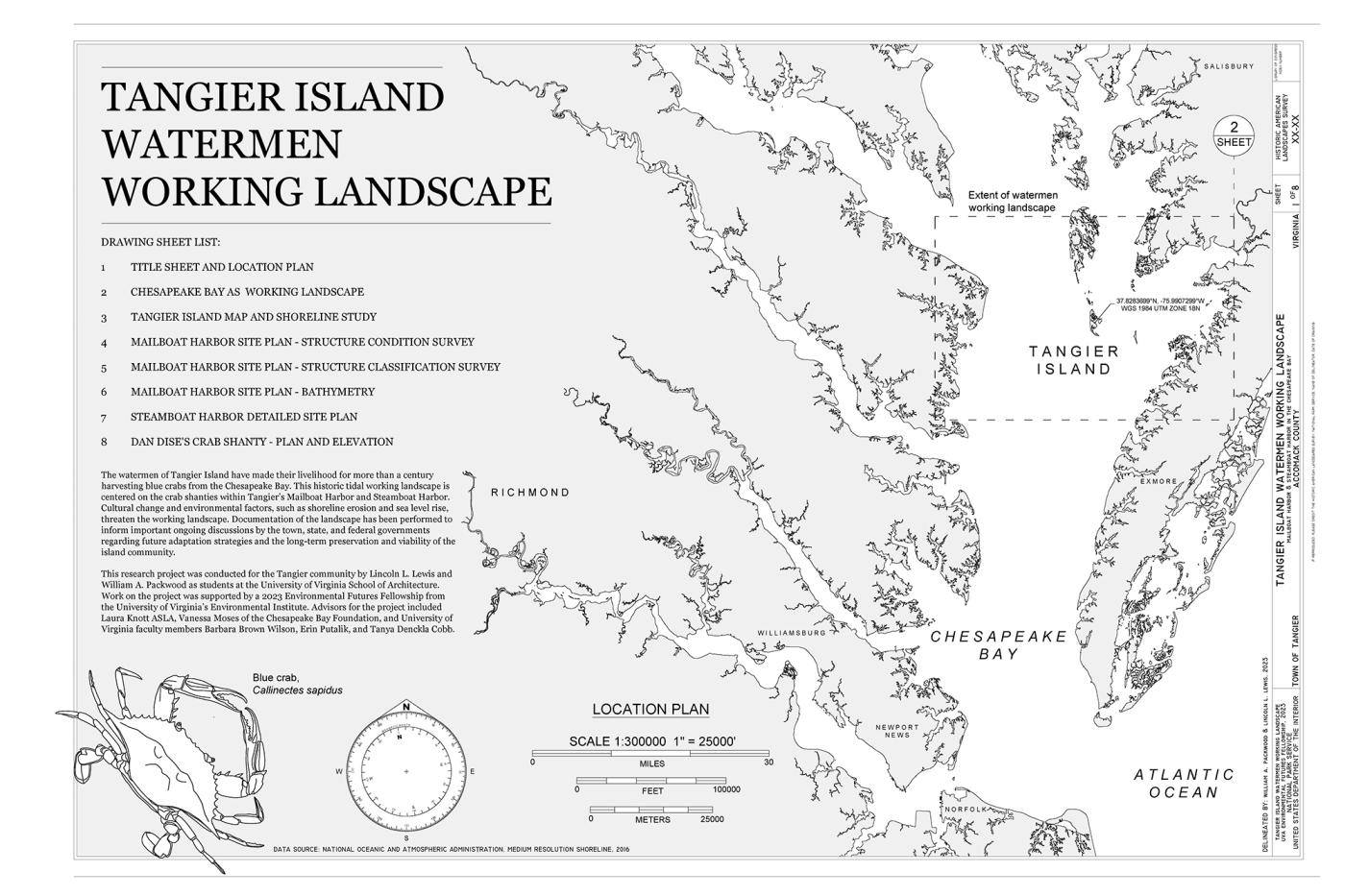
Lincoln Lewis, a second-year doctoral student in the Constructed Environment PhD Program, and Andy Packwood, a third-year undergraduate architecture student at the University of Virginia School of Architecture, clinched the top spot in the 14th annual Historic American Landscapes Survey (HALS) Challenge for their project, Tangier Island Watermen Working Landscape. In addition to winning a cash prize, the students' work will be archived in the Library of Congress to further enrich the nation's premiere repository of American architecture, engineering, and landscapes.
The HALS Challenge competition started in 2010 as a joint effort between the National Park Service, the American Society of Landscape Architects, and the Library of Congress to motivate landscape architects, students, and enthusiasts to chronicle historical landscapes within their localities. Lewis and Packwood's project was one of 13 entries, and they are only the second UVA team in the competition's history to take first prize. Their Tangier-focused research was aptly suited to this year's competition theme, "working landscapes."
With support from UVA's Environmental Institute, who counts Lewis as one of their 2023 Environmental Future Fellows, the team spent last summer researching and documenting the rapidly shrinking Chesapeake Bay isle and the watermen who work its shores. Since 1850, Tangier Island has lost 67% of its landmass and it's forecasted to be fully subsumed by water in the next 50 years due to rising sea levels. This small, tight-knit, mostly white working class fishing, crabbing, and oystering community has made national headlines for its disappearing shoreline, a topic of political interest on both sides of the aisle.
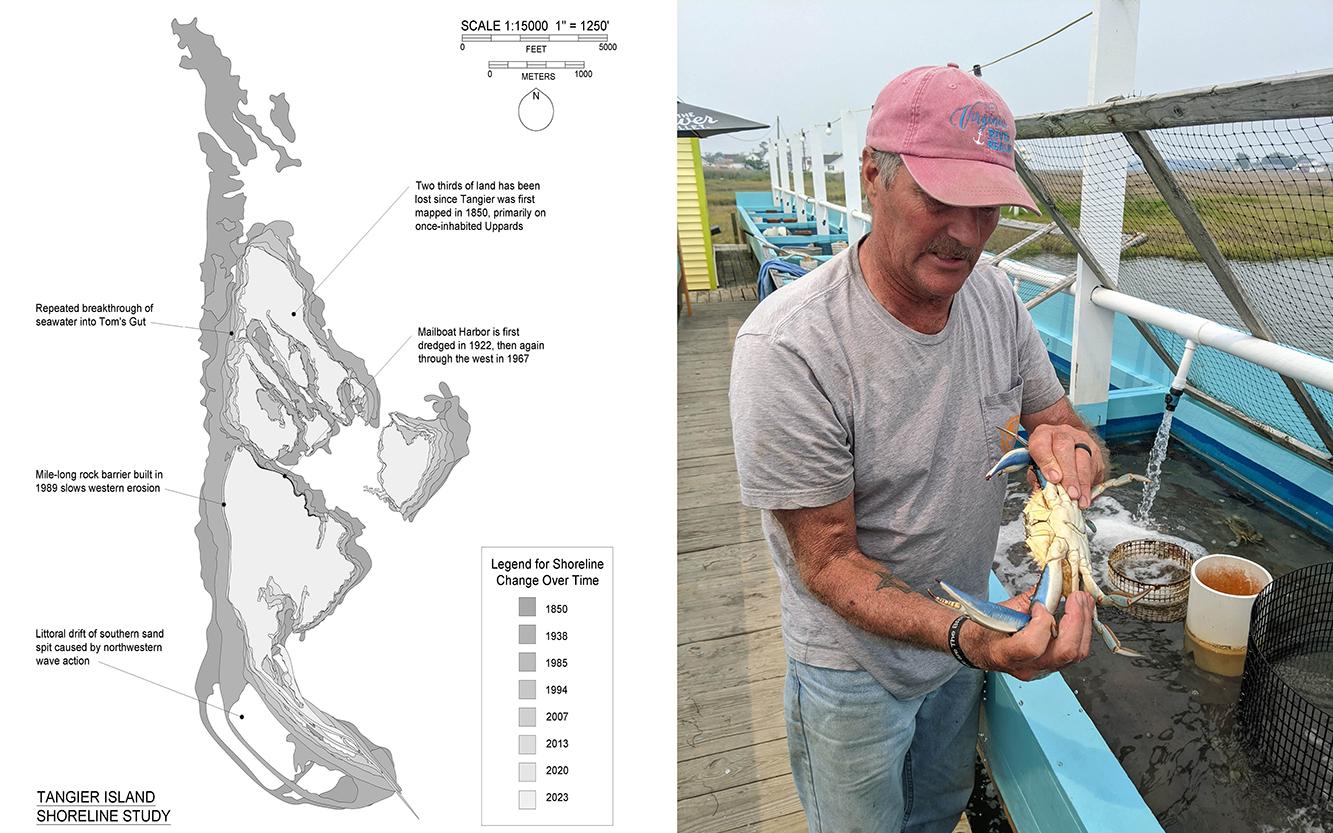
Lewis and Packwood are hoping that their reporting and documentation efforts, which are focused not only on the distinctive history and features of Tangier, but also on the waterman culture that has developed over centuries, can help inform future climate adaptation decision-making. "What we discovered is a vast majority of Tangier’s documentation is focused on the island’s historic district buildings, but not the working landscape of the watermen and their crab shanties, which have been the island’s main economic driver," said Lewis. Tangier, the soft shelled crab capital of the world, is the working landscape of the watermen, whose crab shanties, equipment, and boats, are focused on that industry.

Scott Keyes, Chief of the Heritage Documentation Programs, announced the HALS Challenge winners at the ASLA conference in late-October via video. He said the UVA team was praised by the review panel "for its focus on the primary aspects of waterman culture and the way in which local residents of this remote community have adapted to their unique environment to develop specific building typologies and transportation networks." As seen in the above Tangier Island Shoreline Study, 1850–2023, the students also addressed how Tangier residents have been forced to adapt to various environmental, demographic and economic pressures over time.
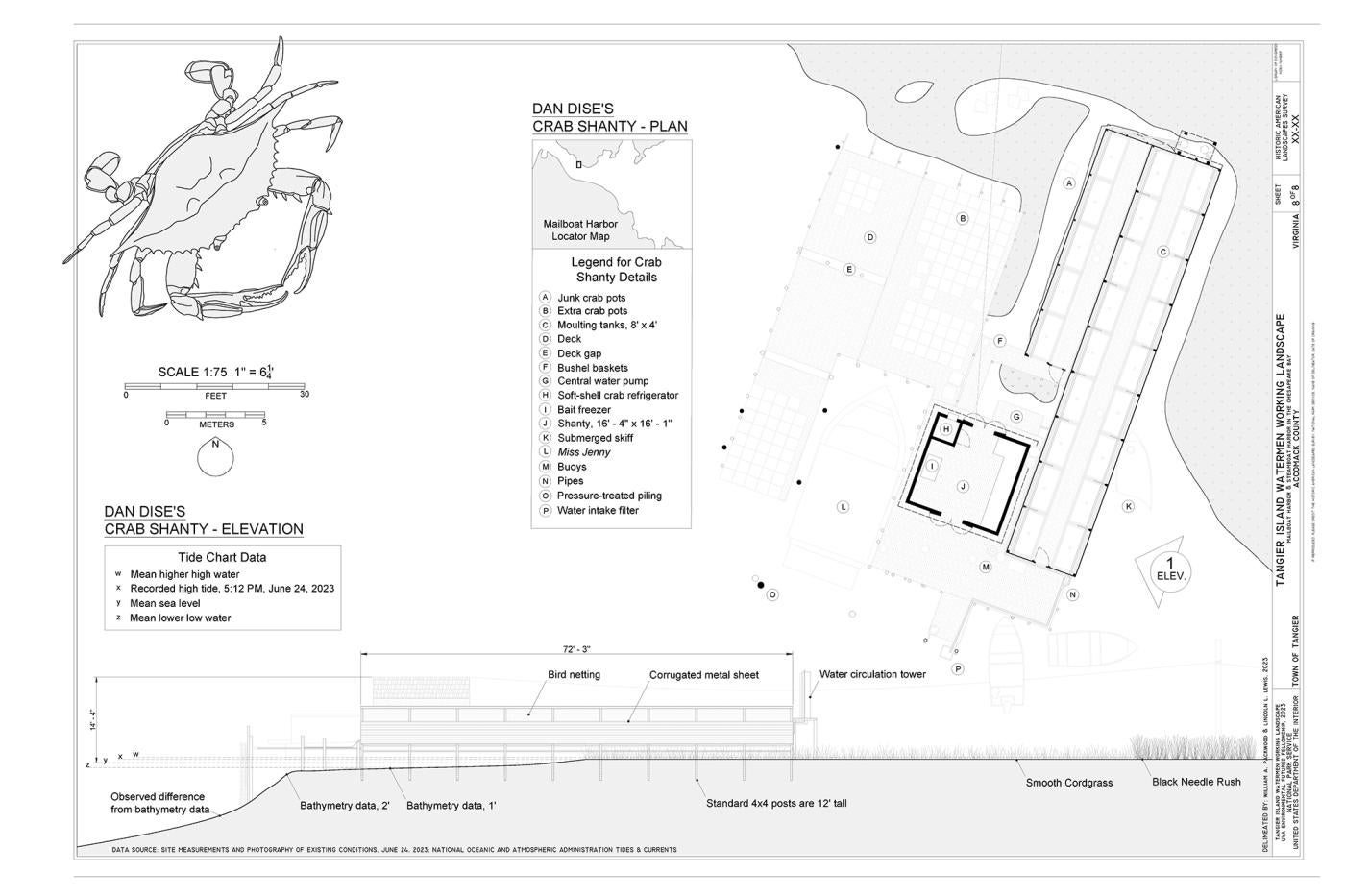
The School of Architecture pair quickly realized that documenting the wet landscape required unique methods not typical for surveying most landscapes or buildings. "We moved around in kayaks and boats to document the crab shanties, using tape measures above the water and sounding poles to measure depth of piles in the water, and a GPS tracking device was used to geolocate the crab shanties and the path of watermen harvesting crabs in the Chesapeake Bay," said Lewis. The detailed drawing of Dan Dise's crab shanty by Packwood and Lewis (above), reveals that the team's meticulous efforts were not in vain and will help preserve Tangier's landscape in the national archives.
The School of Architecture congratulates Lincoln Lewis and Andy Packwood for their honors and important research.

